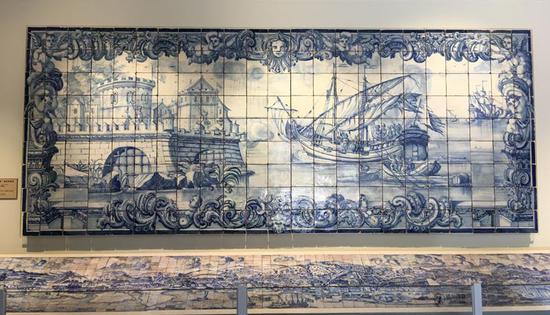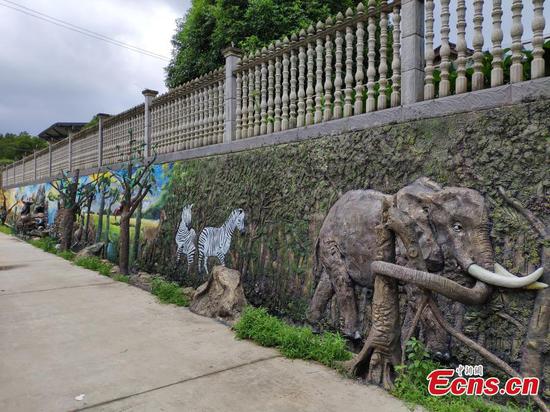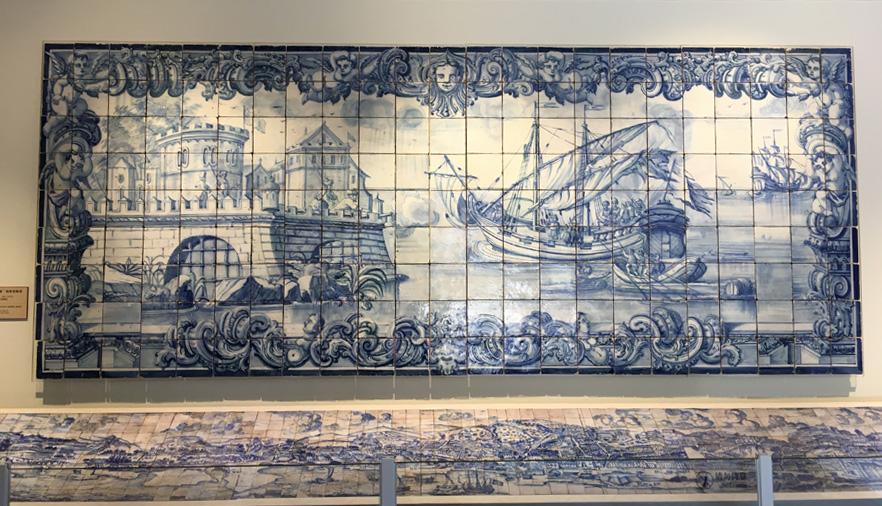
Attack on the Fortress, an azulejo panel from between 1730 and 1750 on display at the Beijing exhibition, shows Chinese blue-and-white porcelain's influence on the Portuguese art form. (Photo by WANG KAIHAO/CHINA DAILY)
China and Portugal are jointly hosting a show of azulejo art in Beijing as part of a diplomatic anniversary, Wang Kaihao reports.
Chinese palatial architecture suffused in splendor and mixed with the sights of city streets bathing in the sunshine of southern Europe is what this exhibition gives visitors at first glance.
The Land of the Glazed Cities: 500 Years of Azulejo in Portugal was unveiled on June 11 at the Palace Museum, also known as the Forbidden City, in Beijing.
In Portuguese, azulejo refers to artworks on glazed ceramic tiles. The exhibits also tell how porcelain, which is rooted in China, grew into another medium of artistic expression on the other side of the Eurasian landmass, thanks to cultural communication over half a millennium.
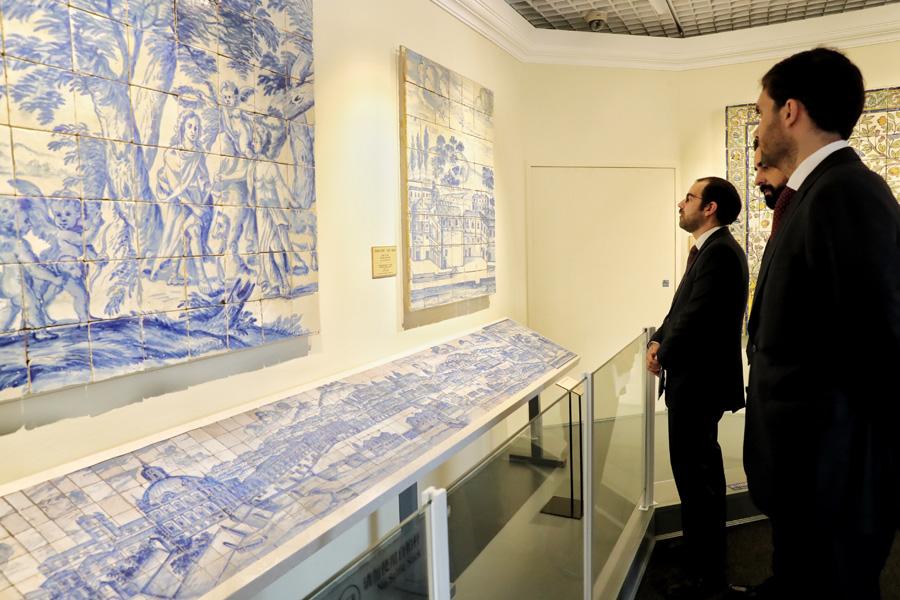
People visit the ongoing show, The Land of the Glazed Cities: 500 Years of Azulejo in Portugal, at the Palace Museum in Beijing. (Photo by JIANG DONG/CHINA DAILY)
"While it is true that the Portuguese did not invent azulejo, it is no less true that in Portugal this ceramic manifestation has gained unique forms that transcend its utilitarian and decorative functions," says Maria Antonia Pinto de Matos, director of the Lisbon-based National Azulejo Museum of Portugal, which is hosting the exhibition jointly with the Palace Museum.
"It has become a major art form that is distinguishable," she says.
"In Portugal, azulejo art is everywhere, from the simple presence of undecorated examples to the most elaborate iconographic programs, so we can say it is a land of glazed cities."
The 50 or so exhibits, which are made of more than 5,000 ceramic tiles, show that azulejo is ubiquitous in Portugal, both geographically and chronologically. From a piece of early 16th-century polychrome enamel, the glazed panels take visitors through the following centuries in palaces, cathedrals, residences and building facades in Portugal.
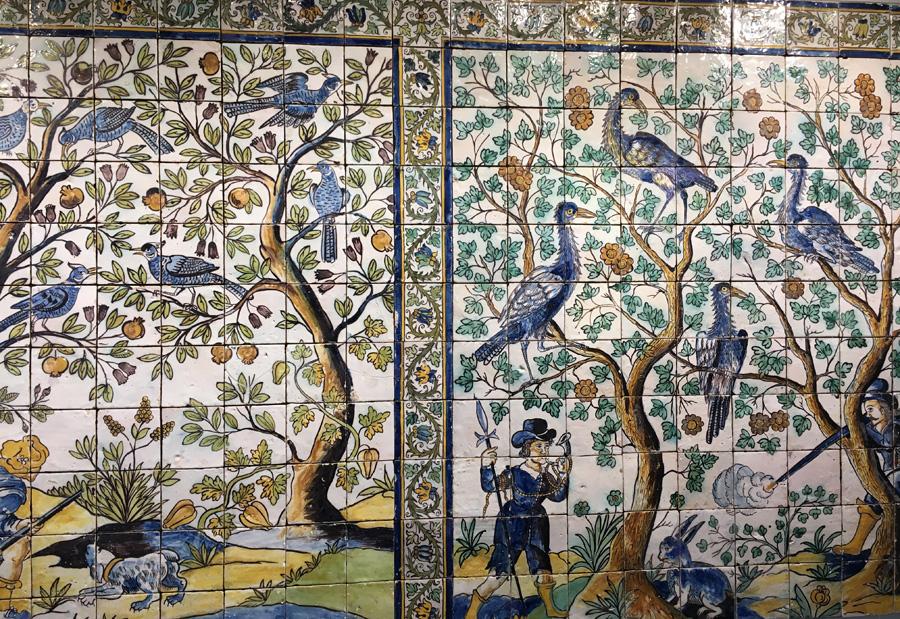
(Photo by WANG KAIHAO/CHINA DAILY)
Some 19th-century panels that adorned restaurants depict vivid scenes of sausages being smoked in kitchens.
Many of the other exhibited works come from subway stations, where generations of people examined them while waiting for their trains.
Grand Panorama of Lisbon, which was created around 1700 and is one of the most important collections in the National Azulejo Museum of Portugal, is also in Beijing. It portrays landmarks in Lisbon, including St. George's Castle, the Monastery of Jeronimos and the Tower of Belem.
Nevertheless, azulejo art is not limited to nostalgia.
The modern exhibits of the show have been donated by artists, who have gone beyond traditional themes like religion and landscapes to explore more experimental patterns of contemporary art. New approaches and materials like photomosaic techniques used to make plaques in relief, and copper-mound have created new areas of expression.
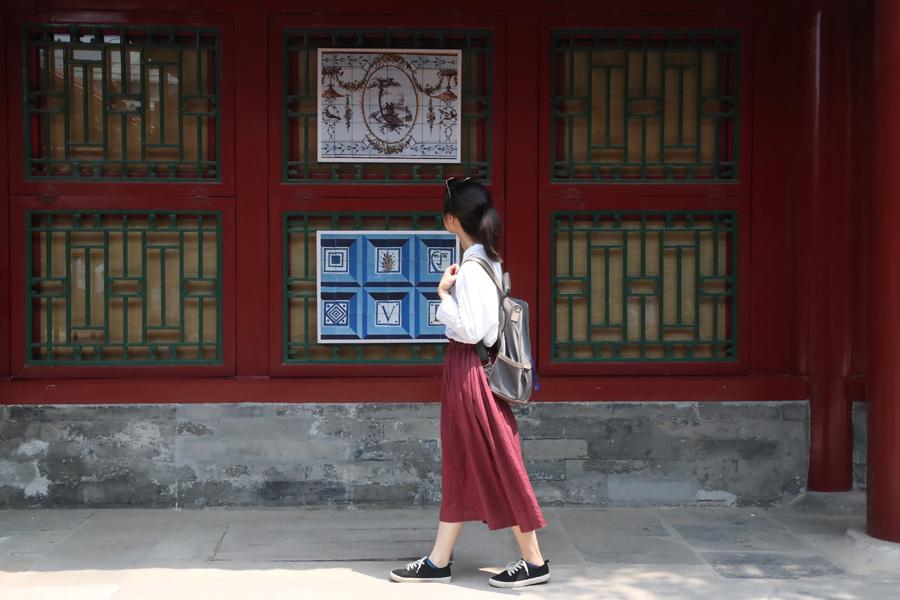
(Photo provided to China Daily)
"Azulejo is an art of time that always adjusts to new trends and ideas," Alexandre Pais, Portuguese curator of the exhibition, says. "Today's generation tries to find new ways of understanding it in a modern context. Some of them use paintings, cartoons or graffiti, and others may consider adjusting them to better fit architecture and the play between light and shadow.
"So, it is alive and we have confidence in its future… because today's artists also mix it in their observations on the modern world."
Pais also attributes the continuous evolution of azulejo to Portuguese people's open minds and curiosity. They absorb things that once felt exotic to them like images from China and India.
A section of the exhibition showcases how Chinese aesthetics and artistic styles influenced azulejo art.
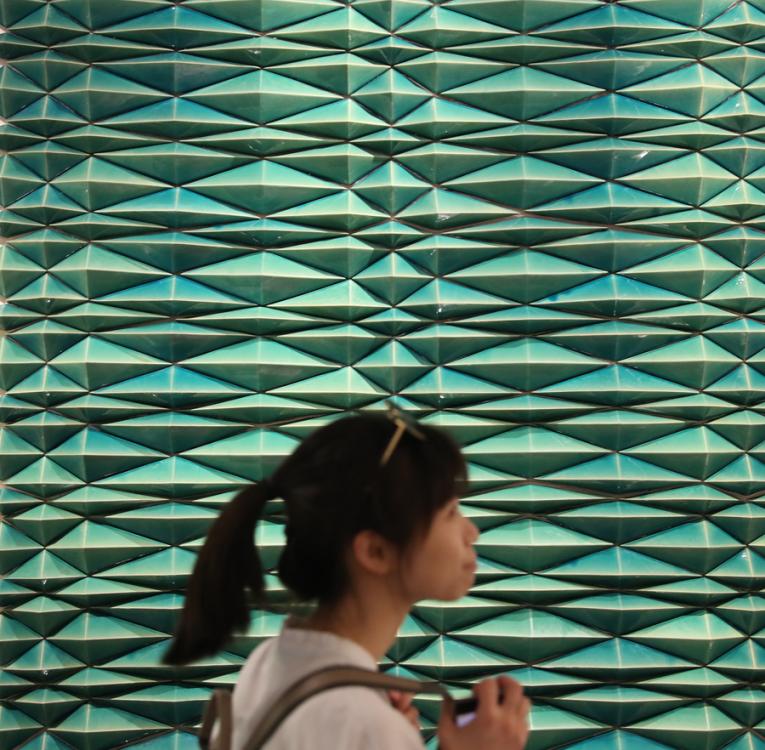
(Photo provided to China Daily)
After all, blue-and-white panels, a commonly seen format in the art form, reminds people of Chinese porcelain. The first Portuguese merchant ship reached China in 1513. And through maritime trade between the two countries, Portugal imported Chinese porcelain and gave azulejo art some Chinese elements.
"In the 17th century, patterns like flowers on Chinese silk became really popular on glazed panels," Pinto de Matos from Portugal's National Azulejo Museum says.
"When the 18th century came, many works reflected people's imagination of what everyday life was like in China, though the artists never went to China."
The pagodas and gardens on many such displayed panels may look familiar to Chinese people, but the "Chinese nobles" in the paintings have European physical features.
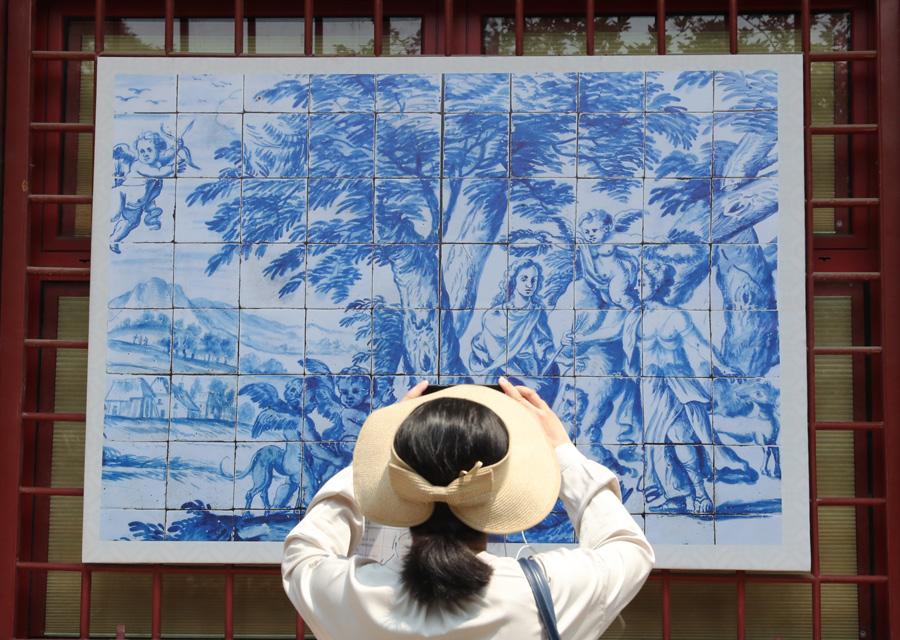
(Photo provided to China Daily)
And as China influenced the development of azulejo, the art form also came to China through Macao, which was ruled by Portugal for a period until its return to China in 1999. There, such glazed ceramic panels are commonly seen near streets and compose a crucial part of the city's historical neighborhood, the Historic Centre of Macao, which is a UNESCO World Heritage Site.
"Azulejo art reflects changes in society and fine arts in Portugal from the Age of Discovery, the Renaissance and the Baroque era until modern times," Wang Xudong, director of the Palace Museum, says.
"It also shows a legend of the ancient Silk Road and a perfect example of cultural exchanges between China and Portugal."
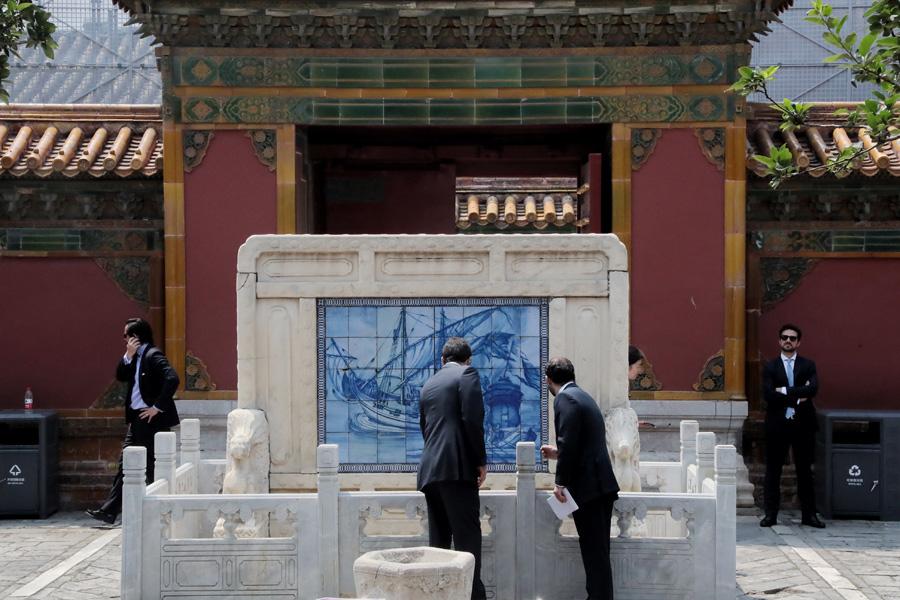
(Photo provided to China Daily)
This year marks the 40th anniversary of the establishment of diplomatic relations between China and Portugal, and the 20th anniversary of the return of Macao. The ongoing exhibition is a key event in a series.
An exhibition of the Palace Museum, The Forbidden City and The Maritime Silk Road, was held in Lisbon from last December to this March. President Xi Jinping and his Portuguese counterpart, Marcelo Rebelo de Sousa, visited the exhibition during Xi's state visit to Portugal last year.
The exhibition in Beijing runs through Oct 7. Wang says its history provides for "new chapters" in the Belt and Road Initiative.













